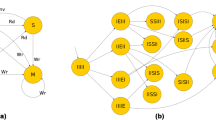Abstract
Previous work in automata theory has shown how to eliminate sequential redundancy from networks of FSMs by finding sequences of inputs and outputs which are never communicated between components of the network. This paper shows that behavior automata—finite-state machines whose inputs and outputs are incompletely scheduled—exhibit similar properties. Using the behavior FSM (BFSM) as a model for scheduling, we show how to identify and eliminate both input and output scheduling don‘t-cares. When a scheduling don‘t-care is eliminated from a network of BFSMs, the register-transfer implementation is guaranteed not to suffer from the corresponding don‘t-care sequence. A definition of scheduling don‘t-cares improves our understanding of the foundations of high-level synthesis and the relationship between high-level and sequential optimization. In practice, scheduling don‘t-care elimination is a powerful tool for eliminating redundancy early in the design process.
Similar content being viewed by others
References
S.H. Unger, Asynchronous Sequential Switching Theory, Wiley-Interscience, New York, 1969.
J. Kim and M.M. Newborn, “The Simplification of Sequential Machines with Input Restrictions,” IEEE Transactions on Computers, Vol. C-20, pp. 1440–1443, Dec. 1972.
S. Devadas, H.-K.T. Ma, and A.R. Newton, “Redundancies and Don't Cares in Sequential Logic Synthesis,” Journal of Electronic Testing: Theory and Applications, Vol. 1, No.1, pp. 15–30, Feb. 1990.
P. Ashar, S. Devadas, and A.R. Newton, “Irredundant Interacting Sequential Machines via Optimal Logic Synthesis,” IEEE Transactions on CAD/ICAS, Vol. 10, No.3, pp. 311-325, March 1991.
M. Damiani and G.D. Micheli, “Don't Care Set Specifications in Combinational and Synchronous Logic Circuits,” IEEE Transactions on CAD/ICAS, Vol. CAD-12, pp. 269–284, 1992.
J.-K. Rho, G. Hachtel, and F. Somenzi, “Don't Care Sequences and the Optimization of Interacting Finite State Machines,” Proc., ICCAD-91, 1991, pp. 418–421.
G. Hachtel and M. Lightner, private communication, 1988.
R.A. Bergamaschi, “The Effects of False Paths in High-Level Synthesis,” Proc., ICCAD-91, 1991, pp. 80–83.
L. Stok, “False Loops Through Resource Sharing,” Proc., ICCAD-92, 1991, pp. 345–348.
A. Takach, W. Wolf, and M. Leeser, “An Automaton Model for Scheduling Constraints,” IEEE Transactions on Computers, Vol. 44, No.1, pp. 1–12, Jan. 1995.
W. Wolf, A. Takach, C.-Y. Huang, R. Manno, and E. Wu, “The Princeton University Behavioral Synthesis System,” Proc., 29th Design Automation Conference, 1992.
Z. Kohavi, Switching and Finite Automata Theory, McGraw-Hill, New York, second edition, 1978.
W.H. Wolf and A.E. Dunlop, “Symbolic Layout and Compaction,” Physical Design Automation of Electronic Systems, B. Preas and M. Lorenzetti (eds.), Benjamin/Cummings, Menlo Park, Chap. 6, 1988.
J.E. Hopcroft and J.D. Ullman, Introduction toAutomata Theory, Languages, and Computation, Addison-Wesley, Boston, 1979.
W. Wolf, A. Takach, and T.-C. Lee, “Architectural Optimization Methods for Control-Dominated Machines,” High-Level VLSI Synthesis, Raul Camposano and Wayne Wolf (eds.), Kluwer Academic Publishers, Boston, 1991.
N. Dutt, Benchmarks for High-Level Synthesis Workshop. Available via ftp from mcnc.org.
T.-Y. Yen and W. Wolf, “Optimal Scheduling of Finite-State Machines,” Proc. ICCD'93, 1993, pp. 366-369.
Author information
Authors and Affiliations
Rights and permissions
About this article
Cite this article
Wolf, W. Redundancy Removal during High-Level Synthesis Using Scheduling Don‘t-Cares. Journal of Electronic Testing 11, 211–225 (1997). https://doi.org/10.1023/A:1008214405542
Issue Date:
DOI: https://doi.org/10.1023/A:1008214405542




